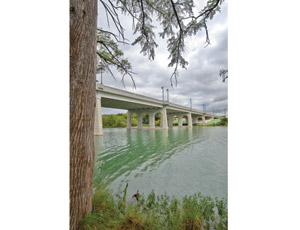One outcome of the deadly 2007, rush-hour collapse of the IH-35W bridge crossing the Mississippi River in Minneapolis has been a re-newed focus on bridge safety nationwide.

In Texas, the state departments of transportation and public safety work together to ensure that the state’s bridges are safe, Mark Cross, TxDOT spokesman, tells Texas Construction.
TxDOT oversees more than 50,000 bridges, including those maintained by state or other governmental entities. From FY 2006 to FY 2008, the number of sufficient bridges (good or better) increased by 1,236. In FY 2008, Texas contracted projects to address 66 structurally deficient bridges and 88 functionally obsolete on-system bridges, Cross says.
Communications between TxDOT and the DPS should improve now that TxDOT has implemented a procedure to immediately notify the agency whenever there is a change to a bridge’s maximum weight allowance.
Once bridge load posting signs have been installed or removed, an electronic notification is sent from TxDOT to DPS notifying it of the change. TxDOT engineers make recommendations to the Texas Transportation Commission to restrict the weight limits allowed on certain bridges.
If the commission approves a recommendation, signs are posted next to the bridge warning drivers of the maximum weight allowed. Often, these signs are ignored by motorists. DPS is tasked with the enforcement of posted bridge weight restrictions through its commercial vehicle enforcement operations.
This makes DPS immediately aware of changes in the maximum weight allowed on load-restricted bridges and improves compliance monitoring by DPS troopers.
“Bridge safety has always been a priority in Texas,” Cross says. “It’s not something we re-examined after the Minnesota event. Every bridge structure is inspected at least once every 24 months and the most critical ones, such as those exposed to salt water, are inspected more often,” Cross says. He adds that Texas bridges represent about 8% of the nation’s bridges, and securing all of them involves a team approach.
“We can trade services with areas not able to make the upgrades,” Cross says. “We’ll help with equipment and concrete if they’re struggling financially and they have a bridge concern. And there are federal and state programs that provide funding.”
div id="articleExtras"

Post a comment to this article
Report Abusive Comment